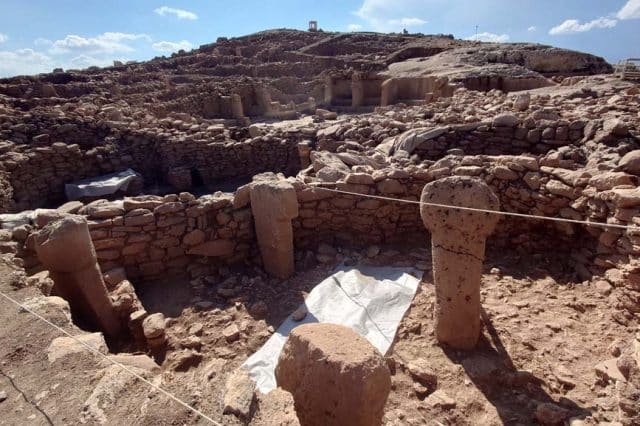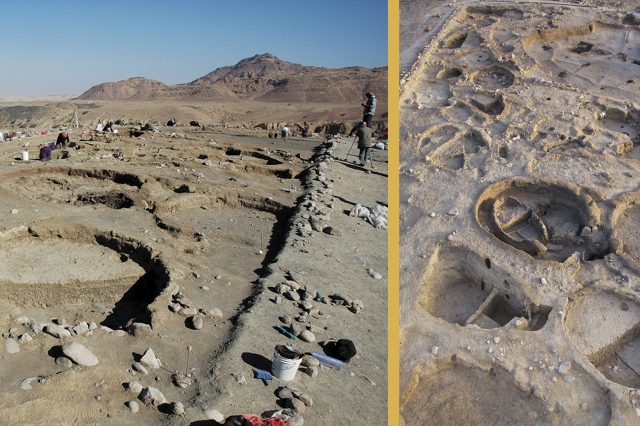Nothing like Göbekli Tepe exists anywhere in the world, in terms of size, complexity and age.
Academics acknowledge a massive structure as the oldest temple ever constructed on the surface of the planet, located in present-day Turkey. It is the oldest found to date, and its builders managed to quarry, erect and transport stones weighing more than 10 tons. The surprising thing is that this was achieved more than 12,000 years ago, during a time when experts say only hunter-gather cultures existed on Earth. The ancient temple’s name is Göbekli Tepe, and here are seven baffling facts you probably did not know about it.
It’s one of the greatest mysteries on Earth. Who, how, and why was such a massive monument built around 12,000 years ago? Was it really a temple, or did it have another purpose? Is it possible that Göbekli Tepe was an astronomical observatory? If so, who built it, and why was it important to keep track of the stars?
On the other hand, if it really was a temple, then what did people 12,000 years ago worship? Why did they quarry, carve, and raise over 200 stone pillars weighing, on average, 10 tons? What do the symbols on the T-shaped pillars mean?
Göbekli Tepe is unlike anything else we’ve ever encountered before, not only because of its age but becomes of its complexity and incredible precision. Göbekli Tepe attests to the fact that its builders were no ordinary hunter-gatherer society. The stones of the site now reveal a story that remained hidden for thousands of years beneath thick layers of soil. Göbekli Tepe is an ancient wonder, and not many people know of its existence or what it represents.
Göbekli Tepe predates the pyramids
Göbekli Tepe is older than old. It predates the oldest Egyptian pyramids by several thousand years. Experts have placed its construction anywhere between 11,000 and 12,000 years ago, although some theories indicate the temple is far older. This means that whoever built the temple lived on Earth during the last Ice Age.
If the oldest Egyptian pyramid was really built around 4,700 years ago, it would mean that the megalithic complex of Göbekli Tepe was built at least 7,000 years before that. This tells us that more than seven thousand years before one of the earliest single-standing stone structures in Egypt was built, the Step Pyramid Complex of Djoser, people were capable of erecting massive monuments with multi-ton stones. We don’t really know how the pyramids were built and how the ancient Egyptians managed to transport some really heavy stones and raise them to incredible heights to build some of the greatest pyramids in Egypt. Göbekli Tepe, then, is an even greater mystery.
We’ve excavated around 5% of the megalithic temple
Göbekli Tepe is truly massive. Although there have been excavations since the 1990s, archaeologists have not been able to fully excavate the site because of its sheer size. To our best estimates to date, experts believe we’ve barely scratched the surface when it comes down to revealing the entire site. As little as 5% of the entire monument has been revealed in archaeological excavations. So far, more than 200 stone pillars in approximately 20 intricate circles have been revealed (as of May 2020) with the help of geographical surveys. It’s truly fascinating to know that each pillar was carved to a height of six meters and has a weight of around 10 tons.
We don’t know its purpose
Although we’ve excavated, studied, and surveyed the sites for several decades, we’ve still not understood the purpose of Göbekli Tepe. The predominant theory is that the site served as a central worship place for ancient societies, making Göbekli Tepe the world’s oldest-known megalithic temple. According to Klaus Schmidt, one of the main excavators of the site, Göbekli Tepe is a stone-age mountain sanctuary. He believed that the site was a kind of pilgrimage destination that attracted worshipers from vast distances. People may have even traveled from as far away as 150 kilometers to reach the temple and offer their worship.
The people who built it may have worshipped the dead
Although experts have still not unanimously agreed on the site’s true purpose, Schmidt considered Göbekli Tepe to have been the central worship place for a cult of the dead. Schmidt argued that the carved animals depicted on the many pillars at the site were meant to protect the dead. However, no tombs have been found at Göbekli Tepe. Despite this, Schmidt believed that the tombs were somewhere nearby, waiting to be uncovered. It has been suggested that shamanic practices may have taken place at Göbekli Tepe around 12,000 years ago and that the T-shaped stone pillars with their carvings of humanoid forms may never have representations of ancestors and not deities. It is believed that the worship of deities appeared much later in Mesopotamia, where extensive temples, shires, and palaces were built honoring various deities.
12,000 years ago, people quarried limestone
Although this may not be that surprising initially, it is when you consider that the quarried limestone had to be transported to the site where the massive pillars would then be raised. Take into consideration that Göbekli Tepe is massive, it’s ancient, and it is really complex. This means that around 12,000 years ago, people had very good reasons and motivation to go through the effort of extracting limestone from the quarries and transporting stones weighing around 10 tons to where the pillars were put into position. Hundreds of people likely dragged the stones, which also tells us that the society that built Göbekli Tepe was pretty well organized and equipped. That means that whoever controlled the site had pronounced control of not only humans but material resources as well, proving for the workers that would build the site.
Geometric Principles at Göbekli Tepe
The more we explore, the more we understand what an important place Göbekli Tepe is. A recent analysis of the site has revealed that the architects who built the site 12,000 years ago were far more experienced and advanced than initially thought. In fact, the builders of Göbekli Tepe had extensive knowledge of geometric principles that they applied to the construction of the site. Research suggests that the builders of the site built some of the stone circles specifically to represent an equilateral triangle. This tells us that whoever the builders were, they were not ordinary hunter-gatherers but developed societies.
The megalithic temple was buried on purpose
Just as the bringing of Gobekli Tepe is shrouded in mystery, so is its final. According to the archaeological analysis of the site, Gobekli Tepe was deliberately backfilled 10,000 years ago. All the structures were buried under debris that consisted mostly of flint gravel, stone tools, and animal bones. Why the site was buried remains a profound mystery.
Have something to add? Visit Curiosmos on Facebook. Join the discussion in our mobile Telegram group. Also, follow us on Google News.





